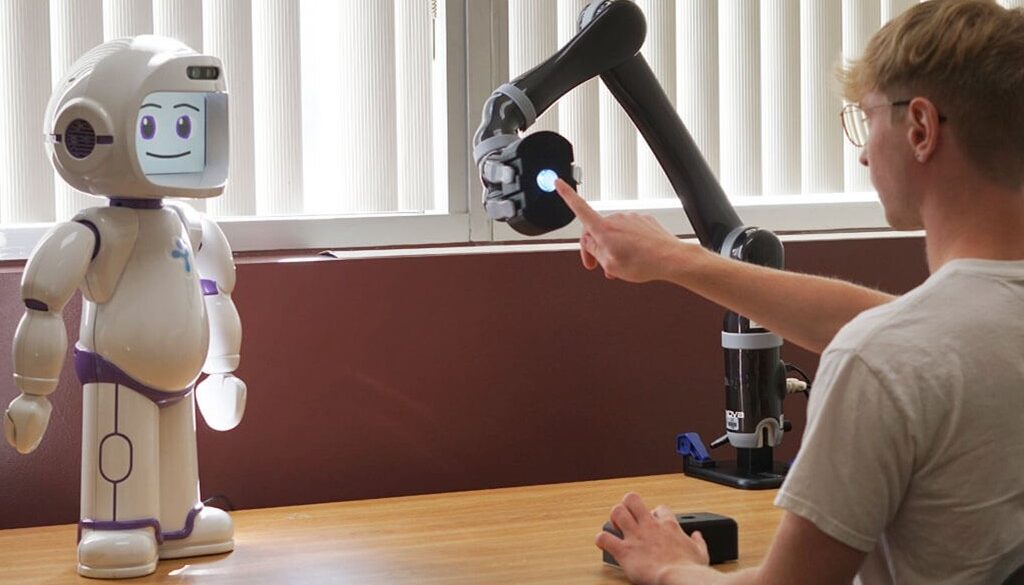
Abstract:
Researchers at USC have developed a novel robotic system to help stroke survivors accurately track their recovery progress. This system combines a robotic arm that provides precise 3D spatial information with a socially assistive robot (SAR) that offers instruction and motivation. Lead author Nathan Dennler, a computer science doctoral student, and his team published their findings in the November 15 issue of Science Robotics.
Key Points:
- Stroke Statistics: Annually, over 15 million people worldwide suffer from strokes, with many experiencing arm and hand impairments, weakness, and paralysis.
Challenge: The phenomenon of “arm nonuse” or “learned nonuse” can hinder recovery. Accurate assessment of natural arm use outside clinical settings is difficult due to the “observer’s paradox.” - Robotic System: The new system tracks spontaneous arm use in stroke survivors. Machine learning techniques process this data to create an “arm nonuse” metric.
- Study Design: The study involved 14 participants who were initially right-hand dominant before their stroke. They used a device with touch sensors to perform reaching tasks, first with their preferred hand and then with their stroke-affected hand.
- Findings: The system showed significant variability in hand selection and reach times among participants, demonstrating consistent results across sessions. It was rated as safe and easy to use.
Reference: